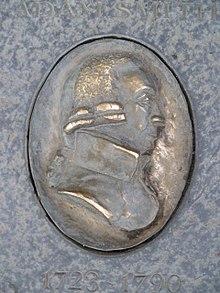
Greyfriars Kirk is a parish church of the Church of Scotland, located in the Old Town of Edinburgh, Scotland. It is surrounded by Greyfriars Kirkyard.

Duddingston Kirk is a Parish Church in the Church of Scotland, located adjacent to Holyrood Park in Duddingston Village, on the east side of the City of Edinburgh. Regular services are held at the kirk, conducted by the minister, Rev Dr James A. P. Jack.

Ronald William Vernon Selby WrightCVO TD JP FRSE FSAScot was a Church of Scotland minister. He became one of the best known Church of Scotland ministers of his generation and served as Moderator of the General Assembly of the Church of Scotland in 1972/73.

The Tron Kirk is a former principal parish church in Edinburgh, Scotland. It is a well-known landmark on the Royal Mile. It was built in the 17th century and closed as a church in 1952. Having stood empty for over fifty years, it was used as a tourist information centre for several years in the mid 2000's and, more recently, was the site of the Edinburgh World Heritage Exhibition and John Kay’s book and gift shop.

Reverend Dr John Lee FRSE was a Scottish academic and polymath, and the Principal of the University of Edinburgh from 1840 to 1859. He was Moderator of the General Assembly of the Church of Scotland in 1844.

The Parish Church of St Cuthbert is a parish church of the Church of Scotland in central Edinburgh. Probably founded in the 7th century, the church once covered an extensive parish around the burgh of Edinburgh. The church's current building was designed by Hippolyte Blanc and completed in 1894.

Trinity College Kirk was a royal collegiate church in Edinburgh, Scotland. The kirk and its adjacent almshouse, Trinity Hospital, were founded in 1460 by Mary of Gueldres in memory of her husband, King James II who had been killed at the siege of Roxburgh Castle that year. Queen Mary was interred in the church, until her coffin was moved to Holyrood Abbey in 1848.

The Queen's Hall is a performance venue in the Southside, Edinburgh, Scotland. The building opened in 1824 as Hope Park Chapel and reopened as the Queen's Hall in 1979.

The Canongate Kirkyard stands around Canongate Kirk on the Royal Mile in Edinburgh, Scotland. The churchyard was used for burials from the late 1680s until the mid-20th century.
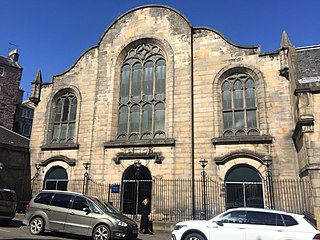
Lady Yester's Kirk was a parish church of the Church of Scotland and one of the burgh churches of Edinburgh. Founded in 1647, it served the south-eastern part of Edinburgh's Old Town until its union with Greyfriars Kirk in 1938.
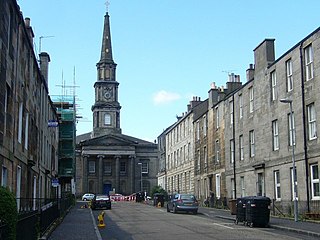
North Leith Parish Church is a congregation of the Church of Scotland, within the Presbytery of Edinburgh. It serves part of Leith, formerly an independent burgh and since 1920 a part of the city of Edinburgh, Scotland.

Meadowbank Parish Church is a congregation of the Church of Scotland in Edinburgh, Scotland. It is based in a late-Victorian church building on London Road, Abbeyhill, around 0.5 miles (0.80 km) north of Holyrood Abbey. The church building was opened in December 1900 as Abbeyhill United Free Church.

Thomas Wilkie (1645-1711) was a Scottish minister who was elected Moderator of the Church of Scotland twice: once in 1701 and once in 1704. He was the minister at the Kirk of the Canongate.

Corstorphine Old Parish Church, formerly St. John's Collegiate Church, is at the old centre of Corstorphine, a village incorporated to the west area of Edinburgh. Built in the 15th century, in the churchyard of a 12th-century or earlier chapel, the former collegiate church was listed category A by Historic Scotland on December 14, 1970.
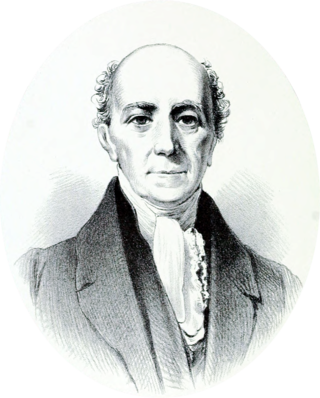
Patrick MacFarlan was a Scottish minister who served as Moderator of the General Assembly of the Church of Scotland in 1834 and as Moderator of the General Assembly of the Free Church of Scotland in 1845.

James Hannay was a Scottish clergyman who served as Dean of St Giles Cathedral. He is best remembered as the unfortunate clergyman struck on the head by a stool thrown by Jenny Geddes after reading from the English Book of Common Prayer.
Lady Glenorchy's Church or Chapel in Edinburgh was a church founded in the 18th century by Willielma Campbell, Viscountess Glenorchy. It was made a quoad sacra parish in 1837.
James Bonar or Bonor was a Church of Scotland minister who served as Moderator of the General Assembly in 1644. He was a strong supporter of the Covenanters. He was a Resolutioner and member of the Moderate Party within the church.
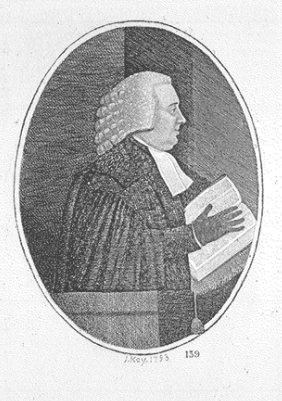
Robert Walker (1716–1783) was a Church of Scotland minister and historian who served as Moderator of the General Assembly in 1771. His views were strongly Calvinistic.








